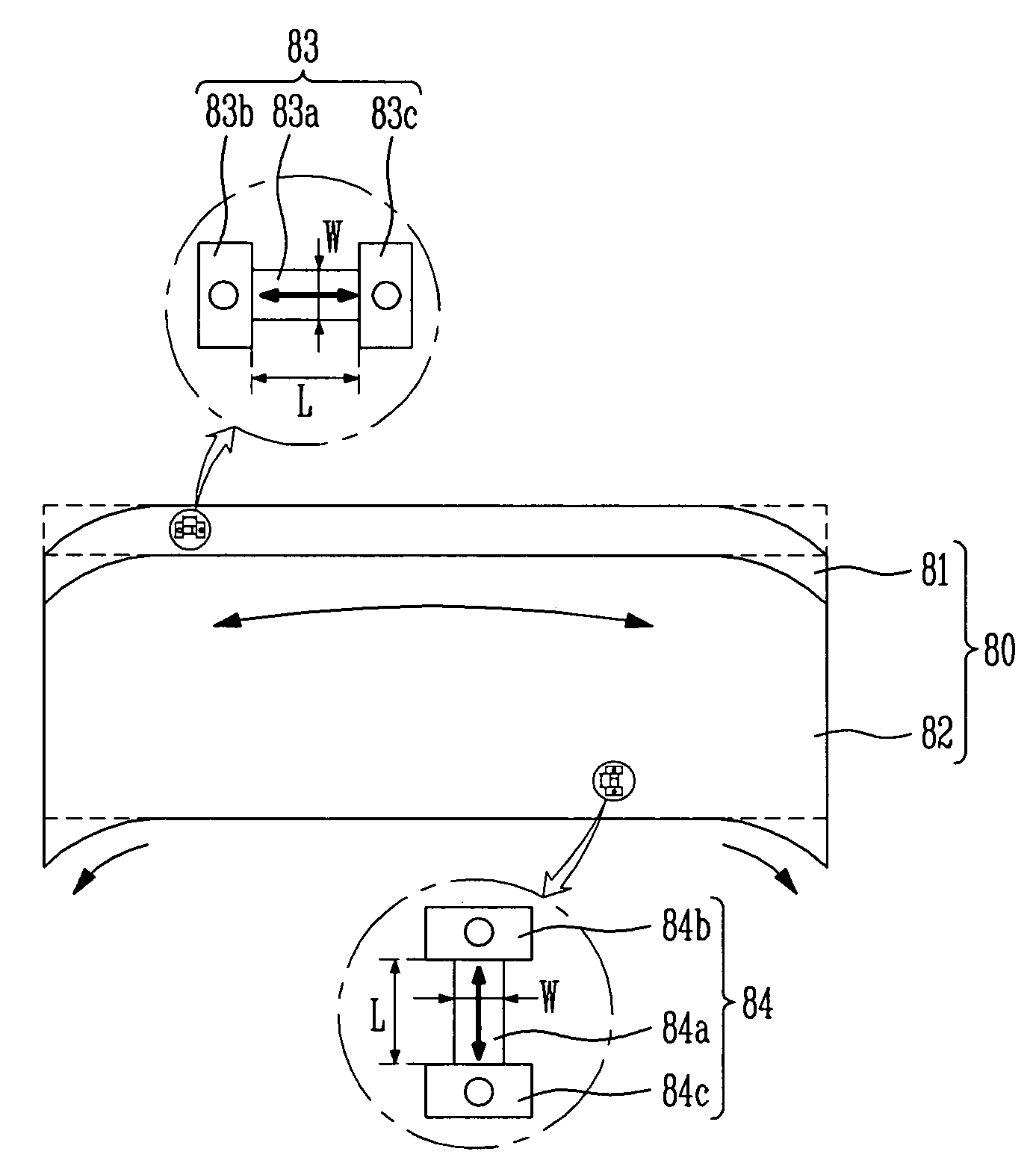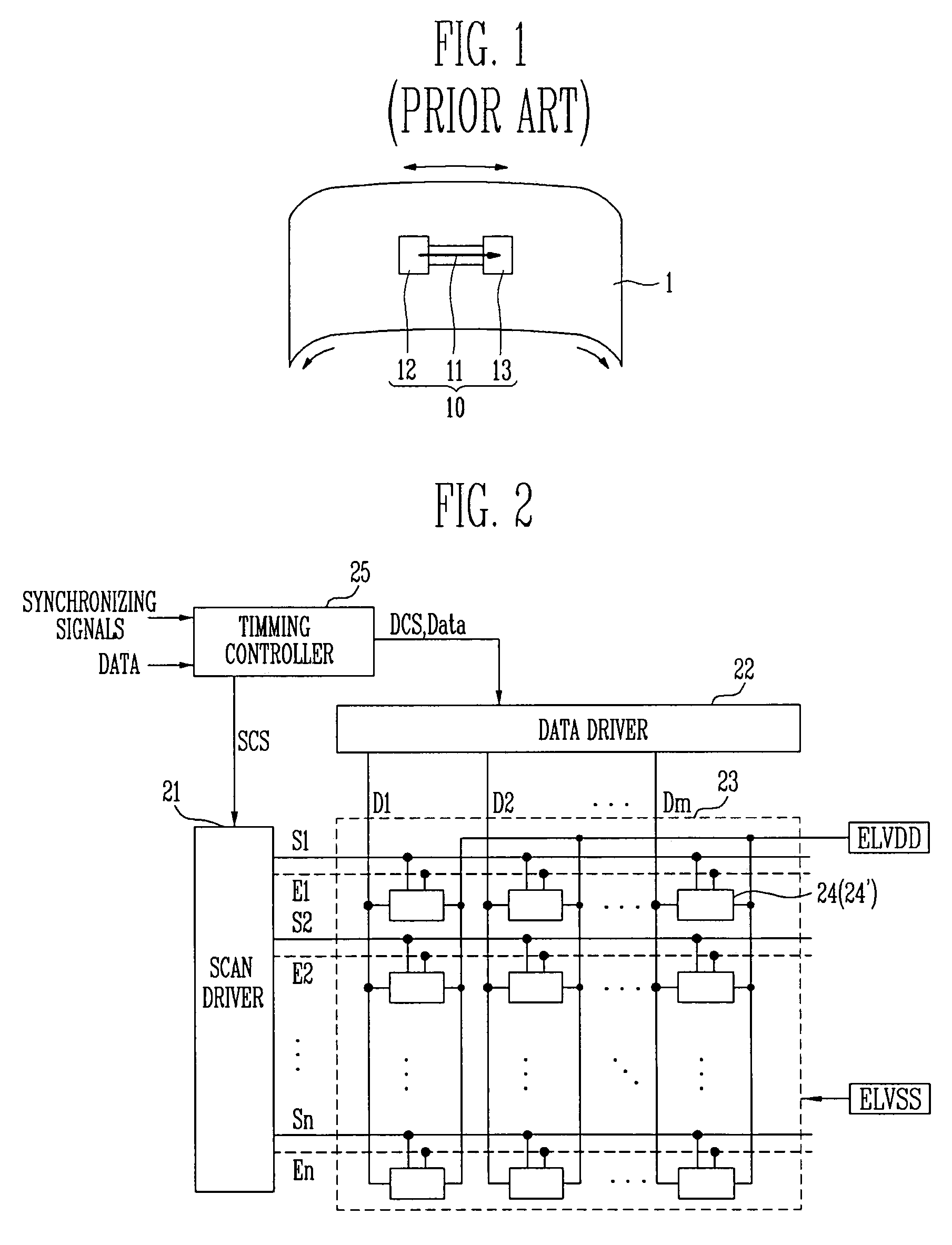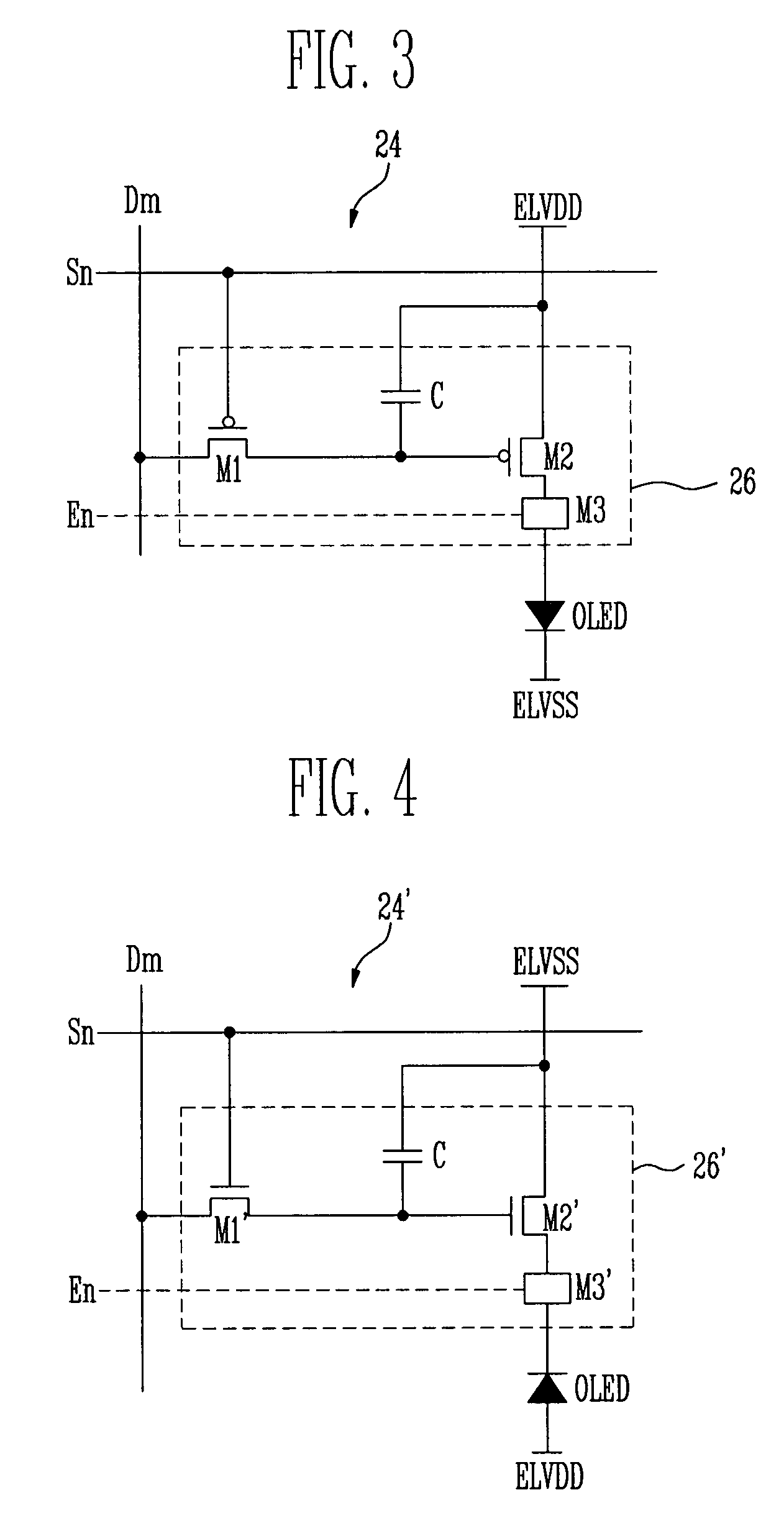Organic light emitting display device
a light-emitting display and organic technology, applied in the direction of organic semiconductor devices, radio frequency controlled devices, instruments, etc., can solve the problems of easy deterioration of tfts performance, easy mass production, and easy large-scale production, so as to minimize the change in an electrical property of tfts
- Summary
- Abstract
- Description
- Claims
- Application Information
AI Technical Summary
Benefits of technology
Problems solved by technology
Method used
Image
Examples
first embodiment
[0036]FIG. 3 illustrates a pixel 24 illustrated in FIG. 2. In FIG. 3, for convenience sake, the pixel 24 connected to the nth scan line Sn and the mth data line Dm is illustrated.
[0037]Referring to FIG. 3, the pixel 24 according to the first embodiment of the present invention includes an organic light emitting diode (OLED), and a pixel circuit 26 connected to the OLED, the data line Dm, the emission control line En, and the scan line Sn to emit light from the OLED. An anode electrode of the OLED is connected to the pixel circuit 26, and a cathode electrode of the OLED is connected to the second power source ELVSS. The OLED generates light corresponding to the current supplied from the pixel circuit 26.
[0038]The pixel circuit 26 includes a second pixel TFT M2 connected between the first power source ELVDD and the OLED; a first pixel TFT M1 connected with the second pixel TFT M2, the data line Dm, and the scan line Sn; and a storage capacitor C connected between a gate electrode of t...
second embodiment
[0041]However, in the pixel 24′ NMOS pixel TFTs M1′ and M2′ are used. FIG. 5 is a block diagram illustrating the structure of a shift register.
[0042]As illustrated in FIG. 5, the shift register according to an embodiment of the present invention includes n stages ST1 to STn connected to a start pulse SP input line. Also, each of the n stages ST1 to STn is connected to three clock signal supply lines C selected from among four clock signal supply lines for supplying clock signals CLK1 to CLK4.
[0043]In the shift register illustrated in FIG. 5, the output lines of the n stages are connected to n row lines ROW1 to ROWn (e.g., scan lines S1, S2, S3, S4, . . . . Sn) included in a pixel array, respectively. Each of the stages inputs only three clock signals selected from among the four clock signals CLK1 to CLK4 whose phases are sequentially delayed. For example, when the first, third, and fourth clock signals CLK1, CLK3, and CLK4 are input to the first stage ST1, three clock signals CLK2...
PUM
| Property | Measurement | Unit |
|---|---|---|
| angle | aaaaa | aaaaa |
| angle | aaaaa | aaaaa |
| angle | aaaaa | aaaaa |
Abstract
Description
Claims
Application Information
 Login to View More
Login to View More - R&D
- Intellectual Property
- Life Sciences
- Materials
- Tech Scout
- Unparalleled Data Quality
- Higher Quality Content
- 60% Fewer Hallucinations
Browse by: Latest US Patents, China's latest patents, Technical Efficacy Thesaurus, Application Domain, Technology Topic, Popular Technical Reports.
© 2025 PatSnap. All rights reserved.Legal|Privacy policy|Modern Slavery Act Transparency Statement|Sitemap|About US| Contact US: help@patsnap.com



